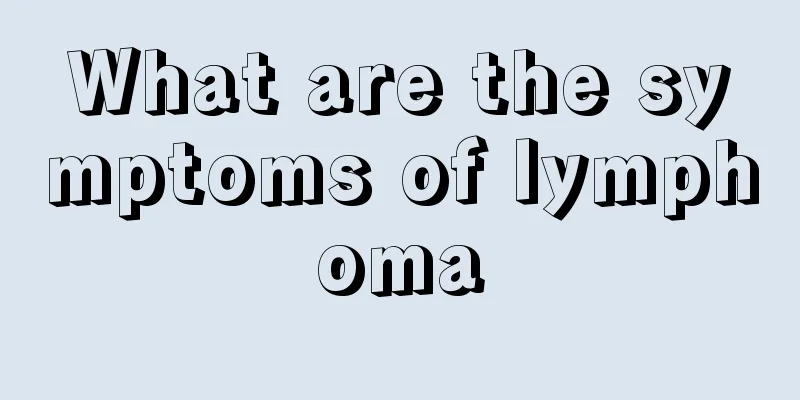Does gallbladder cancer cause vomiting

|
At present, the cause of gallbladder cancer is still not completely clear. Most people believe that it is caused by a combination of factors, which may include mechanical stimulation of stones, inflammation, abnormal cholesterol metabolism and stimulation of bile, which cause mucosal hyperplasia and degeneration, and then cancer. 75% of patients with gallbladder cancer also have gallbladder stones, and 10% of patients with gallbladder stones suffer from gallbladder cancer, and the incidence rate is higher than that of patients without stones. As for whether there is any influence of certain chemical carcinogens, there is not enough evidence. 1. Risk factors Being familiar with the risk factors of gallbladder cancer can improve the rate of early diagnosis. ① Middle-aged and elderly female patients with gallstones over 50 years old; ② Those with a long course of disease and a history of gallstones for more than 5 years; ③ Patients with gallstones whose B-ultrasound shows localized thickening of the gallbladder wall; ④ Gallstones with a diameter > 2 cm or impacted stones in the gallbladder neck; ⑤ Patients with gallstones whose pain in the gallbladder area has recently become persistent, and who have obvious symptoms of digestive dysfunction, and who are emaciated and weak; ⑥ Patients with a single gallbladder polyp ≥ 10 mm in diameter or < 10 mm but multiple; ⑦ Non-functional gallbladder, porcelain gallbladder, and gallbladder wall calcification that develops into porcelain gallbladder; ⑧ Abnormal bile and pancreatic duct confluence; ⑨ Exposure to some carcinogens, such as methylcholanthrene. 2. Relationship between cholelithiasis, chronic cholecystitis and gallbladder cancer (1) According to foreign reports, 80% of gallbladder cancer and gallstones coexist, while in China, the coexistence rate is 70%. (2) The larger the stone diameter, the higher the incidence of gallbladder cancer. (3) The risk of developing gallbladder cancer in people with gallstones is 6 to 15 times higher than that in people without gallstones. (4) The development process of gallbladder cancer is speculated to be: cholelithiasis/cholecystitis → hyperplasia of the gallbladder mucosal epithelium and the appearance of atypical hyperplasia. Mild cases lead to carcinoma in situ, while severe atypical hyperplasia leads to invasive cancer. (5) During bile metabolism, cholic acid, a product of chenodeoxycholic acid, is a carcinogen. The level of cholic acid in patients with gallbladder cancer increases. Some people also believe that cholesterol and bile salts in bile can become carcinogens under the influence of infection, especially when infected with anaerobic bacteria Bacillus subtilis. This may be one of the reasons for stimulating the gallbladder mucosa to produce cancer. |
<<: The harm of fever caused by gallbladder cancer
>>: How long can you live with mid-term gallbladder cancer
Recommend
Sequelae of cerebral thrombosis
Cerebral thrombosis is not a disease like fever o...
How to correct cervical scoliosis?
Scoliosis of the spine is actually quite common, ...
Pathological types of gastric cancer
Adenocarcinoma accounts for about 95% of gastric ...
Is acute cholecystitis a serious problem?
Although acute cholecystitis is a common disease,...
What are the side effects of wolfberry
Wolfberry is very common and many people like to ...
What are the symptoms of dry mouth and throat
Dry mouth is a common symptom. People may experie...
What is the reason for high hyaluronic acid
In order to keep their facial skin firm and plump...
How much water should I drink at one time
Many people must have heard of this saying: if yo...
What kind of water is best for mixing protein powder
Protein powder is not unfamiliar to many people w...
How long can one live with advanced colorectal cancer
How long can a patient with advanced colorectal c...
Eating more bamboo shoots can prevent liver cancer. Six points should be noted in the diet for liver cancer
Liver cancer is the third most common malignant t...
How to remove oil stains from clothes
Washing clothes is a very troublesome thing, espe...
Can cod liver oil be used on the face?
We all know that cod liver oil is rich in nutrien...
What causes bitter taste in the mouth and bad breath?
When you find yourself having bitter taste in the...
What are the early symptoms of liver cancer
The most common early symptoms of liver cancer in...









